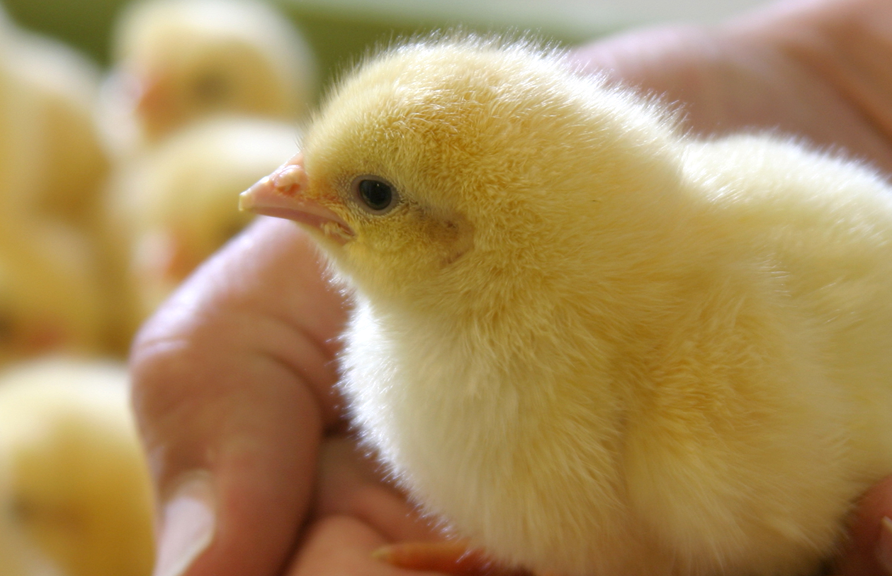



How to find a chick's navel and why it's an important sign of chick quality
Advice on identifying a chick's navel and optimise conditions for good chick quality.A well-closed navel is one of the most important and easily visible signs of chick quality. In a good quality chick, the navel is well hidden in the down. One needs to blow to see it. Running a finger over it, you will hardly feel it – it is smooth and dry. It is light coloured, similar to the surrounding skin. These qualities are not always found, however. Even chicks hatched from eggs incubated under excellent conditions may still have poor navels.

A chick's navel is the residue of the entrance through which first the small intestine and then the yolk are absorbed into the body cavity. Absorption begins on day 17 and continues until day 20, making these three days critically important. The closure of the navel requires optimal synchrony between the embryo's physiology and the development of the morphological structures. Chicks hatched from long-stored eggs or from eggs produced by older breeders often show poor navels, which is probably due to disturbed synchrony.
The closure of the navel is a process that requires time and a stable, comfortable environment. Any interfering factors, such as too high or too low temperature or poor ventilation should be avoided. These are an indication of the importance of conditions at transfer and in the hatchery.
However, other factors may cause poor navel quality too. If there is insufficient water loss during incubation, the belly will be too full to absorb everything and too stretched for the navel to be able to close. Suboptimal incubation conditions (eg chronically too low, or too high temperature) reduce utilisation of the yolk sac, as a small, underdeveloped embryo is not able to absorb the big yolk residues. A similar problem arises if the chicks are pulled out too early or if the hatch window is very large. Late hatching chicks will simply not have enough time to close their navels.
A leaking, wet navel that is not properly closed behaves like an open wound, and is a potential place for bacteria to enter the most sensitive part of the body cavity. Just “behind the walls” lie internal organs and the residues of the yolk sac, providing perfect conditions for bacteria to breed, which can result in mortality in the first week of life. A dry, rough navel that looks like a dark button, or the dried remains of the umbilical cord still attached, are of course also undesirable, but less risky.
Forming the navel is the finishing touch of the long process of incubation; think of it as a “cockade on the gift package”. If the person making it is preoccupied, in a hurry or disturbed – or if the package is too big or the ribbon too short – the final effect will be disappointing. So make sure the embryo feels comfortable.
Advice:
- Treat navel quality as the basic trait that expresses chicken quality.
- If you notice a high frequency of poor navel quality, check conditions of the late setter phase and in the hatcher.
- Support maximum utilisation of the yolk sac by avoiding chronically too low or too high temperatures in the setter. Fully developed embryos with little yolk residue will have no problem closing their navels.
- Avoid high temperatures in the hatcher phase, as this can make the navel close too fast before the yolk sac has been fully absorbed.
- Optimise hatcher ventilation with respect to CO2 and relative humidity.
- Monitor the relationship between the navel and belly status. If you notice full bellies combined with badly closed navels, adjust the rate of weight loss during incubation.
- Aim for a narrow hatch window by ensuring good preheating and uniform incubation conditions.








